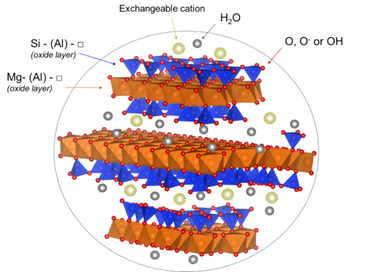Research progress on magnesium silicate hydrate phases and future opportunities
DOI:
https://doi.org/10.21809/rilemtechlett.2022.162Keywords:
Magnesium silicate hydrate (M-S-H), structure, surface charges, low pH cementsAbstract
This short letter summaries the latest research on the structure and thermodynamic modelling of the magnesium silicate hydrates (M-S-H) phases. M-S-H structure is comparable to hydrated clays, with a smaller and rounder microstructures compared to clay platelets. Similar to clay minerals, M-S-H can incorporate ions such as aluminium and hydrated exchangeable cations to compensate the negative surface charge. This fundamental understanding of M-S-H structure allowed to develop structure-based thermodynamic models, which can further help to optimise the conditions for M-S-H formation and its use as cementitious materials. Optimized binders containing M-S-H have the advantages of presenting: i) good mechanical properties, ii) dense microstructure and potentially good resistances to leaching and iii) low pH values. These types of binders could therefore be used for cement products with non-steel reinforcement, for the encapsulation of specific wastes, for products containing natural fibres or for the clay stabilisation, etc.

Downloads
Published
How to Cite
Issue
Section
License
Copyright (c) 2022 Ellina Bernard

This work is licensed under a Creative Commons Attribution 4.0 International License.
Authors retain copyright of the articles published in RILEM Technical Letters and grant the journal the right of first publication with open access. The work is simultaneously licensed under Creative Commons Attribution 4.0 International License (CC BY 4.0) that allows others to share and adapt the work under the following terms: 1) a proper attribution is given in a form of a reference to the original work's authorship and initial publication in RILEM Technical Letters (bibliographic record with the DOI link); 2) a link to the license is provided; 3) the changes (if any) are indicated.









